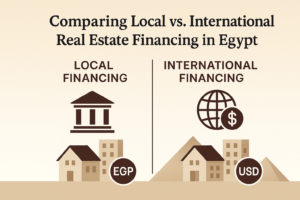The real estate market is constantly evolving, influenced by economic trends, demographic shifts, and government policies. Understanding how to analyze the real estate market is crucial for investors, developers, and homebuyers looking to make informed decisions. A well-conducted market analysis helps identify profitable opportunities, minimize risks, and maximize return on investment (ROI).
This guide provides a step-by-step approach to analyzing the real estate market, covering key indicators, tools, and strategies to ensure successful property investments.
What Is Real Estate Market Analysis?
Real estate market analysis involves assessing various factors that affect property values, demand, and supply. It includes evaluating economic indicators, studying price trends, and identifying high-growth areas for investment.
A successful market analysis allows investors to:
- Determine the best time and location for property investment.
- Assess the profitability of residential, commercial, or rental properties.
- Understand buyer and renter behavior to optimize pricing and marketing strategies.
Key Factors in Real Estate Market Analysis
Supply and Demand Dynamics
The balance between supply and demand plays a major role in property valuation:
- High demand, low supply → Property prices increase.
- Low demand, high supply → Property prices decrease.
Understanding these dynamics helps investors target locations where demand is rising faster than supply.
Property Price Trends
To gauge market health, monitor:
- Average price per square meter in different locations.
- Historical price changes to predict future trends.
- Inflation and interest rate impacts on property affordability.
Economic Indicators Affecting Real Estate
Several economic factors influence real estate markets, including:
- GDP Growth – A strong economy leads to increased property demand.
- Interest Rates – Higher rates make borrowing more expensive, potentially lowering demand.
- Inflation – Affects construction costs and overall property prices.
Identifying High-ROI Investment Areas
Choosing the right location is key to real estate success. The best areas for investment typically feature:
- Infrastructure developments and transport accessibility.
- Government-backed projects boosting property value.
- Growing population and increasing rental demand.
Methods and Tools for Real Estate Market Analysis
Comparative Market Analysis (CMA)
This approach compares similar properties within a given location to:
- Estimate the fair market value of a property.
- Identify pricing trends and buyer preferences.
- Evaluate whether an area is overvalued or undervalued.
Key Performance Indicators (KPIs) in Real Estate
- Return on Investment (ROI): Measures the profitability of a property investment.
- Occupancy Rate: Indicates demand for rental properties in an area.
- Market Absorption Rate: Shows how quickly properties are sold in a specific location.
Practical Steps to Conduct a Real Estate Market Analysis
Research Investment Opportunities
Before investing, consider:
- Is the area experiencing economic growth?
- Are there planned infrastructure improvements?
- What is the demand for rental properties in the location?
Analyze Competition in the Market
- Compare property prices among different developers.
- Study successful real estate projects to identify key success factors.
- Look for gaps in the market where new investment opportunities exist.
Forecasting Market Trends
Predicting future trends requires analyzing:
- Government policies affecting real estate.
- Changes in population demographics.
- Upcoming large-scale developments impacting property values.
Common Questions About Real Estate Market Analysis
How do I determine if a real estate market is growing or declining?
Look at indicators such as rising property prices, increased sales activity, and high demand for rentals.
Can I analyze the real estate market on my own, or do I need professional help?
You can conduct a basic analysis, but consulting an expert provides deeper insights and minimizes risks.
What are the best tools for real estate market analysis?
Platforms offering comparative market analysis (CMA), real estate reports, and price trend tracking.
How do interest rates impact real estate investment?
Higher interest rates increase borrowing costs, potentially reducing buyer demand. Lower rates can boost property purchases.
What factors should I consider when choosing an investment location?
Economic growth, infrastructure projects, population trends, and demand for housing or rentals.
Partner with Consult for Expert Real Estate Market Analysis
Want to make smart real estate investments? Consult provides in-depth market analysis to help you:
Identify high-potential investment opportunities
Understand market trends and maximize ROI
Receive tailored real estate investment guidance
Contact us now for a free consultation and take the first step toward successful real estate investments

















